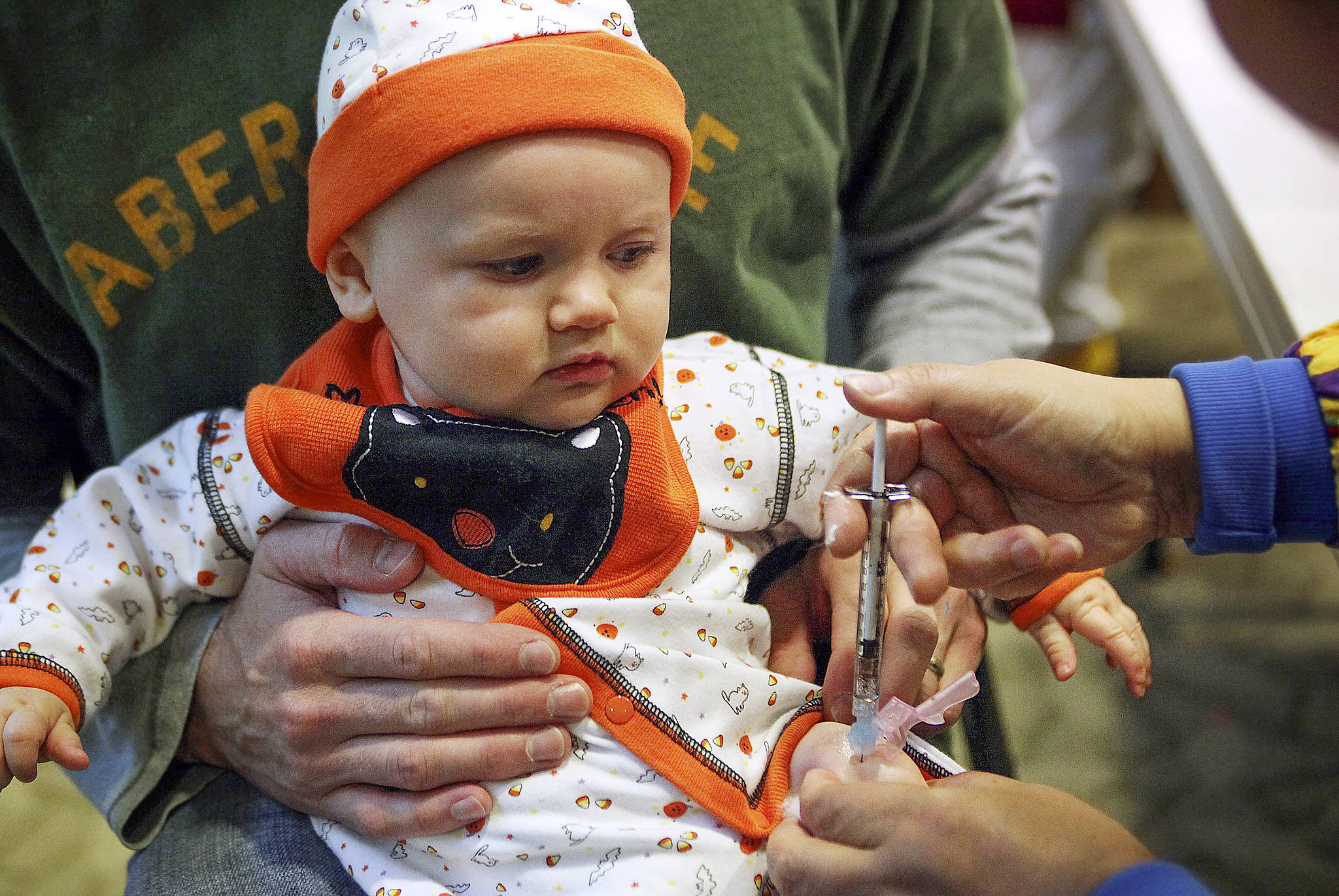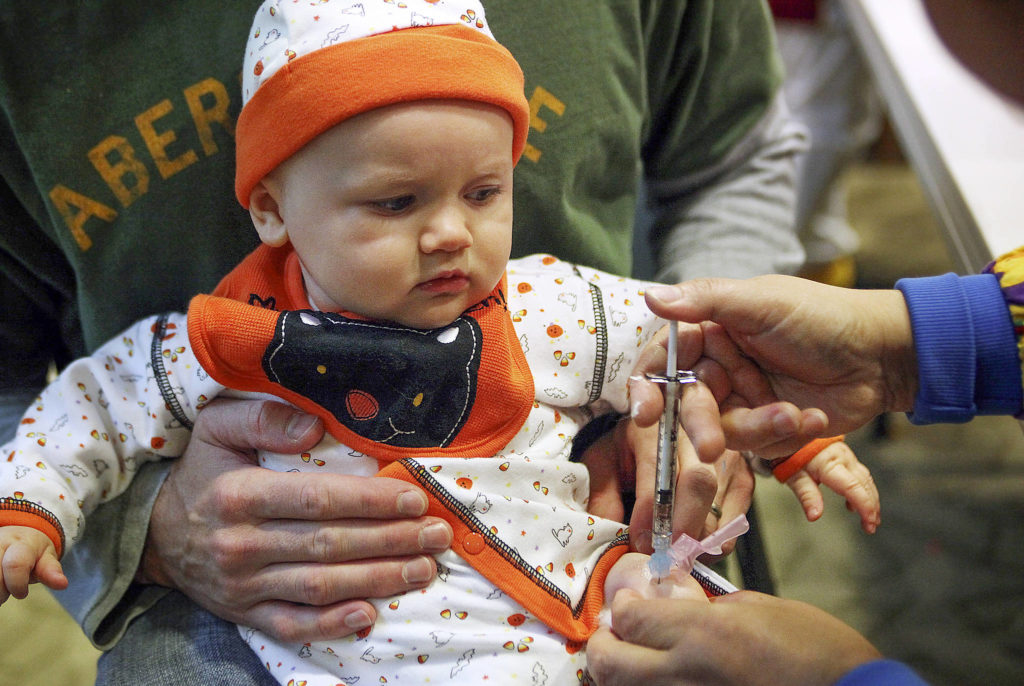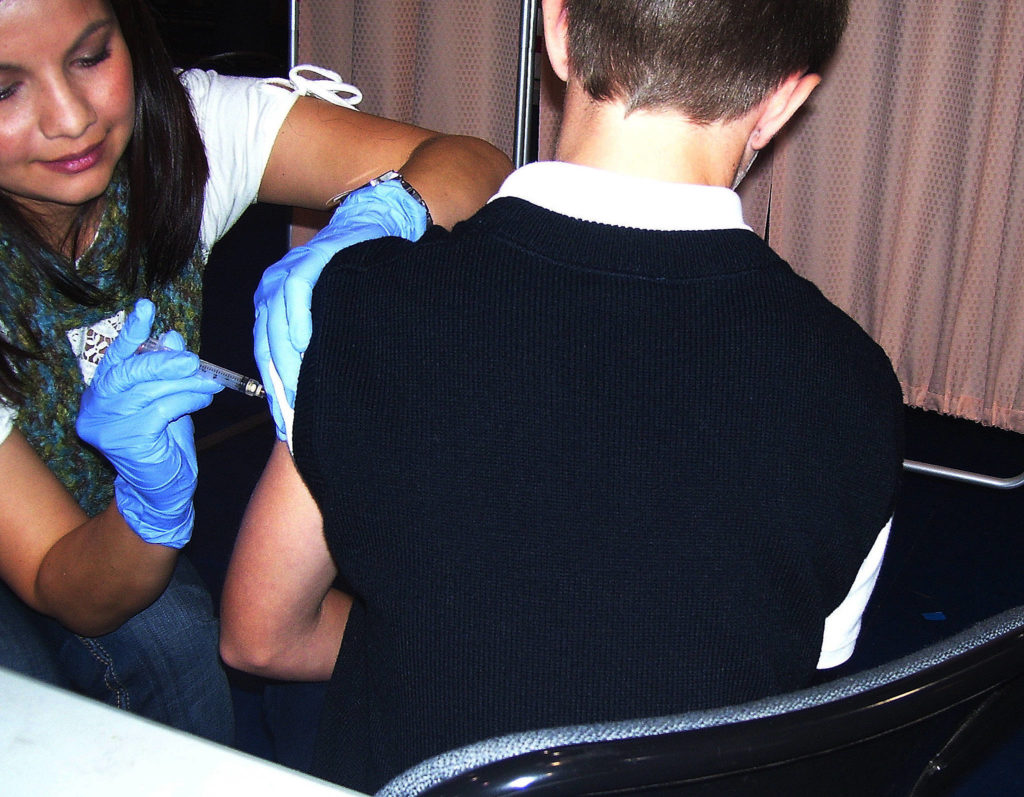Better safe than sorry. A dozen years ago, in the midst of the H1N1 outbreak, that was a common sentiment as thousands eagerly lined up around Snohomish County for vaccines to protect their children.
From Stanwood and Monroe to Mill Creek, public vaccination clinics in 2009 targeted the new influenza A H1N1 virus, also called swine flu. Unlike COVID-19, H1N1 was hitting children and younger adults especially hard.
The 2009-2010 pandemic, its risk to kids, and how parents responded came to mind this week as the state Department of Health expanded eligibility for the Pfizer-BioNTech coronavirus vaccine to everyone 12 and older. That followed an advisory committee to the Centers for Disease Control and Prevention voting Wednesday to recommend the Pfizer vaccine for children ages 12 to 15. Already, it had federal approval for those 16 and older.
Dr. Umair Shah, the state’s secretary of health, called the expanded eligibility “the best step we can take.” He said in a statement it will help keep kids in school, and let them safely spend time with friends and take part in sports.
I’m thrilled that many kids will soon enjoy the peace of mind and protection from COVID that people my age have had for months. Mine is a generation that grew up with childhood illnesses, back before many of today’s vaccines were available. We caught the measles, the mumps and chicken pox. I’m not pictured in my third-grade class photo because I was sick for three weeks.
Yet vaccine hesitancy is still in the news. Those of us who were anxious to get a COVID shot at the first opportunity now see that the vaccine is widely available, often without an appointment. Apparently, though, people need to be coaxed through TV ads and promises of freebies.
When Gov. Jay Inslee visited the vaccination site at the Arlington airport last month, more than 300,000 people 65 and older hadn’t yet gotten a first dose.
It’s baffling to me that a shield against life-threatening illness isn’t incentive enough — yet the chance to watch a Mariners ballgame in T-Mobile Park’s fully vaccinated section might be.
I don’t remember much talk of vaccine hesitancy in the fall of 2009, a few months after the World Health Organization declared a pandemic as H1N1 spread globally. Pandemic, that’s a frightening word. The world hadn’t seen one, according to the CDC, in 40 years. The 1968 influenza A virus killed an estimated 1 million people worldwide, 100,000 in the United States.
I do have a distinct memory of rushing to pick up my youngest child, then 11, in the middle of a school day to make it to an H1N1 vaccination clinic at a gym on the Tulalip reservation. That was Nov. 2, 2009.
On Oct. 24, 2009, then-Herald writer Sharon Salyer talked with Tiffanie Loper, who’d driven 107 miles from Pierce County to get an H1N1 vaccine at a drive-through clinic in Stanwood’s Heritage Park. It was one of nine public vaccine sites in the county that day, with doses given by injection or nasal spray.
At the time, the H1N1 vaccine was only being administered here to children between 6 months old and 4 years old and to pregnant women — groups at greatest risk of serious complications or death from swine flu. Loper had come with evidence of her pregnancy, an ultrasound picture on the dash of her car.
Some local schools experienced swine flu closures, according to Herald archives, including Everett’s Jackson Elementary and Odyssey Elementary in the Mukilteo district. Health officials were asking parents to monitor kids’ health before school each day.
By early December 2009, the Snohomish Health District had reported five deaths from complications related to H1N1. Nationally, the CDC estimated the H1N1 virus claimed 12,469 lives in the year before April 10, 2010.
On Halloween morning 2009, hundreds of people took H1N1 seriously enough to line up at what was then Stevens Hospital in Edmonds for a free vaccine. The previous Saturday, staff at Providence Physician Group’s Mill Creek clinic gave 500 vaccinations per hour as people waited as long as three hours, in 11 lines, for protection from swine flu.
Today’s COVID toll — 577 lives lost in Snohomish County by Wednesday, and, according to The New York Times, 583,990 nationwide by Friday — would have been unthinkable to those of us who feared for our children in 2009.
With her 7-month-old son awaiting his H1N1 vaccine back then in Stanwood, Arlington’s Rochelle O’Brien talked with a Herald reporter.
“Our doctor explained it so well,” she said at the time. “Better safe than sorry.”
Julie Muhlstein: jmuhlstein@heraldnet.com
Talk to us
> Give us your news tips.
> Send us a letter to the editor.
> More Herald contact information.



























